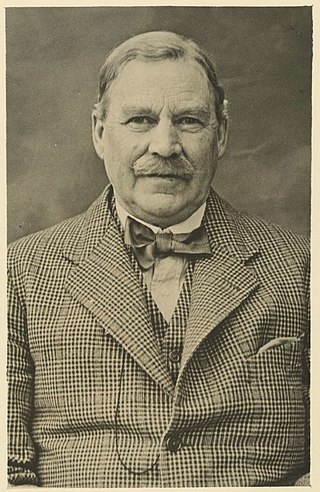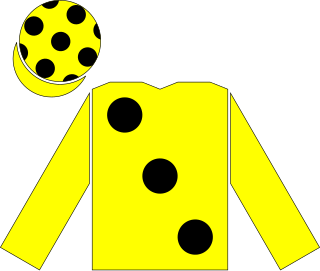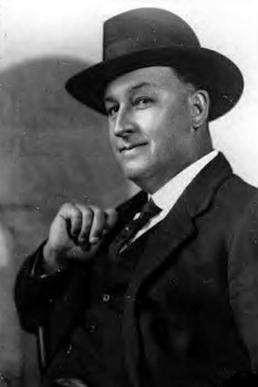Related Research Articles

Emilie Charlotte, Lady de Bathe, known as LillieLangtry and nicknamed "The Jersey Lily", was a British socialite, stage actress and producer.

William Henry Ogilvie was a Scottish-Australian narrative poet and horseman, jackaroo, and drover, and described as a quiet-spoken handsome Scot of medium height, with a fair moustache and red complexion. He was also known as Will Ogilvie, by the pen names including 'Glenrowan' and the lesser 'Swingle-Bar', and by his initials, WHO.
The discography of English singer-songwriter and former Beatle George Harrison consists of 12 studio albums, two live albums, four compilation albums, 35 singles, two video albums and four box sets. Harrison's first solo releases – the Wonderwall Music film soundtrack (1968) and Electronic Sound (1969) – were almost entirely instrumental works, issued during the last two years of the Beatles' career. Following the band's break-up in April 1970, Harrison continued to produce recordings by his fellow Apple Records acts, notably former bandmate Ringo Starr. He recorded and collaborated with a wide range of artists, including Shankar, Bob Dylan, Eric Clapton and Gary Wright.

Edward George Dyson was an Australian journalist, poet, playwright and short story writer. He was the elder brother of illustrators Will Dyson (1880–1938) and Ambrose Dyson (1876–1913), with three sisters also of artistic and literary praise.
Gay Crusader (1914–1932) was a British Thoroughbred racehorse and sire who won a wartime version of the English Triple Crown in 1917. In a career which lasted from September 1916 to October 1917 he ran ten times and won eight races, including his last seven in succession. In addition to his three Classic wins he defeated older horses in the Newmarket Gold Cup and the Champion Stakes. Because of wartime restrictions, all of his races were at Newmarket Racecourse. After being injured in training in 1918 he was retired to stud, where his record was disappointing.

High-Rise was a Thoroughbred race horse and sire, bred in Ireland, but trained in the United Kingdom, Dubai and the United States. He is best known as the winner of the Derby in 1998.

Eric Harrison was an Australian aviator who made the country's first military flight, and helped lay the foundations of the Royal Australian Air Force (RAAF).

Raymond Longford was a prolific Australian film director, writer, producer, and actor during the silent era. Longford was a major director of the silent film era of the Australian cinema. He formed a production team with Lottie Lyell. His contributions to Australian cinema with his ongoing collaborations with Lyell, including The Sentimental Bloke (1919) and The Blue Mountains Mystery (1921), prompted the Australian Film Institute's AFI Raymond Longford Award, inaugurated in 1968, to be named in his honour.

Keane of Kalgoorlie, or a Story of the Sydney Cup is a 1911 Australian silent film set in the racing and gambling circles of Sydney, based on a popular play by Edward William O'Sullivan and Arthur Wright, adapted from the novel by Wright.

The Loyal Rebel is a 1915 Australian silent film directed by Alfred Rolfe set against the background of the Eureka Rebellion.
Gambler's Gold is a 1911 Australian film based on the 1911 novel by Arthur Wright. It is considered a lost film.
In the Last Stride is a 1916 Australian silent film directed by Martyn Keith based on the 1914 popular action novel by Arthur Wright. The film's star, Dave Smith, was a champion heavyweight boxer who had fought Les Darcy. There was also an appearance from boxer Les O'Donnell.
Arthur Wright was an Australian writer best known for his novels set against a background of the sporting world, particularly horseracing, which meant he was often compared during his lifetime to Nat Gould. In his lifetime he was called "Australia's most prolific novelist".
The Herald was a weekly trade union magazine published in Adelaide, South Australia between 1894 and March 1910; for the first four years titled The Weekly Herald. It was succeeded by The Daily Herald, which ran from 7 March 1910 to 16 June 1924.
A Sport from Hollowlog Flat is a 1915 novel by Arthur Wright. It consisted of a series of short stories he had published previously for various magazines.
A Man – That's All (1916) is an Australian war film directed by Alfred Rolfe for Australasian Films.
The South Australian School of Design was an art school in the earliest days of the City of Adelaide, the progenitor of the South Australian School of Arts, a department of the University of South Australia.

Kennymore was a British Thoroughbred racehorse and sire. He was a highly talented horse whose career was adversely affected by his difficult temperament. He did not appear until the autumn of his two-year-old season but made an immediate impact as he finished third in the Middle Park Stakes and then won the Dewhurst Stakes. In the following spring he won the Craven Stakes and the 2000 Guineas but lost his chance in the Epsom Derby when he became highly agitated before the start. He went on to finish third in the Eclipse Stakes and second in the St Leger before winning the Newmarket St Leger on his final appearance. He died at the age of five in 1916 after a single season at stud.
Keane of Kalgoorlie is a 1907 Australian novel by Arthur Wright that was adapted into a play and film.
This article presents a list of the historical events and publications of Australian literature during 1997.
References
- ↑ on ""UNDER A CLOUD."". The Leader . Orange, NSW: National Library of Australia. 7 February 1916. p. 2. Retrieved 29 September 2014.
- ↑ "A TALE OF THE TURF—AND UNDER THE TURF". The West Australian . Perth: National Library of Australia. 14 March 1916. p. 5 Edition: SECOND EDITION. Retrieved 29 September 2014.
- ↑ "A SUPER NAT GOULD". The Australian Worker . Sydney: National Library of Australia. 24 February 1916. p. 19. Retrieved 29 September 2014.